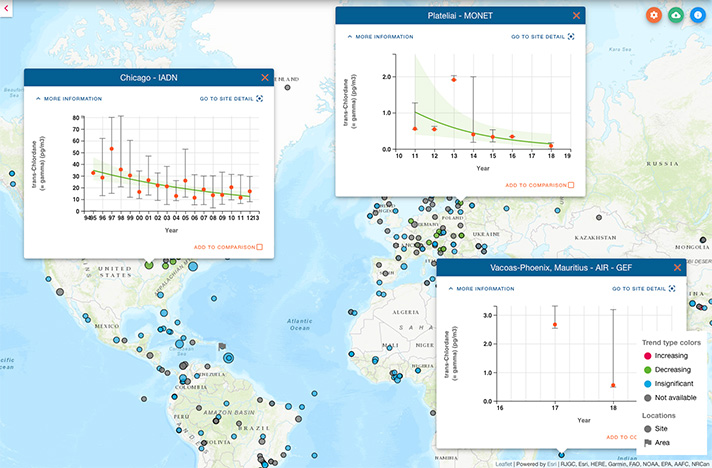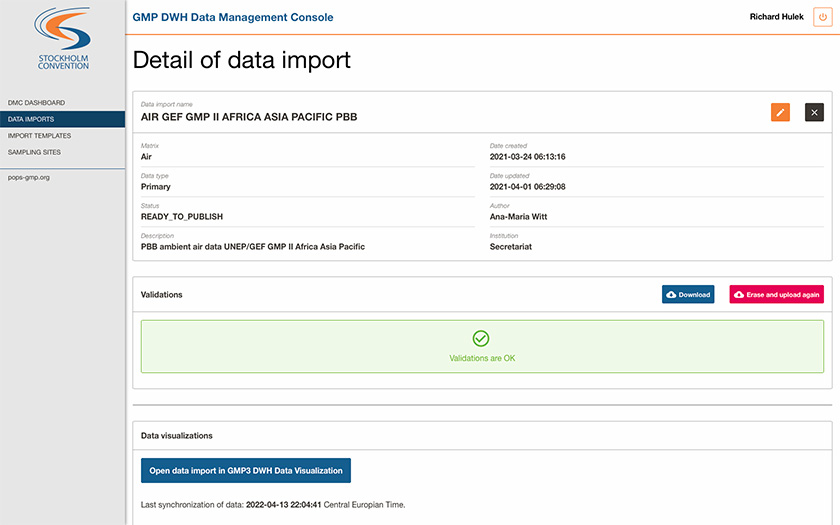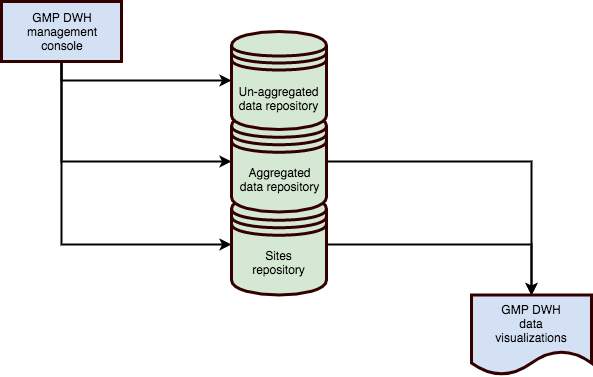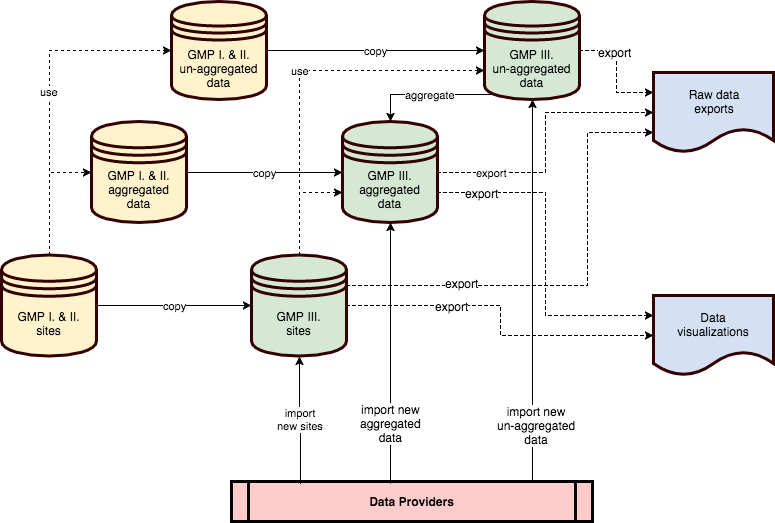
Schedule a demo with us
We can help you solve company communication.
On-line tool to store and visualize data on levels of POPs in core matrices:
ambient air, water, human milk and blood

Visualisations are supporting the preparation of regional POPs monitoring reports and show available data (POPs concentrations) in the GMP data warehouse in four core matrices.
Spatial distribution
Data availability
Summary statistics
Trend analysis
Regional summaries

The GMP DWH Data Management Console (DMC) is a collaborative working environment for the members of Regional Organization Groups, members of the Stockholm Convention Secretariat, involved data providers, and GMP DWH data managers.
Data collection from various sources
Data harmonisation across data providers
QA/QC, data format valiations
Data management
Approval management

The global monitoring plan for persistent organic pollutants (POPs) is an important component of the effectiveness evaluation of the Stockholm Convention (SC) and provides a harmonised organisational framework for the collection of comparable monitoring data on the presence of POPs from all regions in order to identify changes of concentrations of persistent organic pollutants over time, as well as on regional and global environmental transport.
To support the challenging goal – identify long term trends of concentrations of chemicals in the environment – the Global Monitoring Plan Data Warehouse system was developed. It has tools for data provides, Regional Organisation Group members and SC secretariat to collect, harmonise, validate, approve, visualise, report and publish data according to the Global Monitoring Plan processes, standards and requirements.

Serve as regional node for electronic data collection, storage, processing and presentation in regions with limited capacity;
Support the development of regional monitoring reports and the global report in the frame of the GMP;
Support the effectiveness evaluation of the Stockholm Convention by compiling and visualizing results of global POPs monitoring activities;
Providing user-friendly access to the POPs monitoring data to all stakeholders and the broad public.

An essential aspect of the Global Monitoring Plan is a 6-year long intervals work cycle. The first data collection campaign, referred to as GMP1, was organised in 2008. The second, GMP2 in 2014 and GMP3 in 2020.
Once the data collection campaign is closed, approved by Regional Organisational Groups and endorsed by the Conference of Parties, data are frozen and not changed anymore.
Every following data collection campaign should contain data from the previous one. A new data collection campaign brings new data from the last six years, extends data sets fitting temporarily into previous campaigns, and provides the opportunity to apply updates and corrections of data from previous campaigns if necessary.

GMP DWH, 2020 Hůlek, R., Borůvková, J., Kalina, J., Bednářová, Z., Šebková, K., Hruban, T., Novotný, V., Ismael, M., Klánová J. Global Monitoring Plan Data Warehouse of the Stockholm Convention on Persistent Organic Pollutants: visualisation platform and on-line tool for the analysis of global levels of POPs in air, water, breast milk and blood [online]. Masaryk University, 2020. Available from: https://data.pops-gmp.org/2020/all